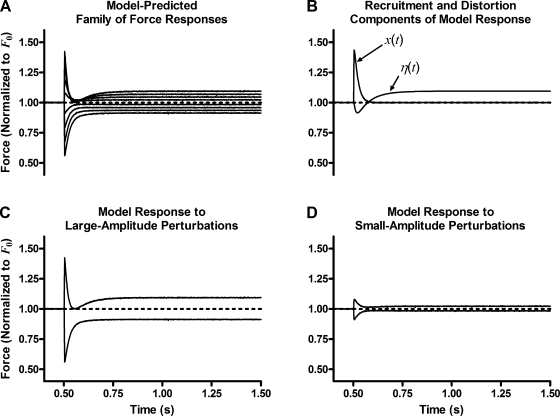Figure 6.
Predicted step response of model variant. The addition of the second-order interaction term produces a family of force responses (A) similar to experimentally observed responses to various amplitude quick stretch and release. (B) Each component of the model response to the largest amplitude (2% ML) quick stretch. Transients in responses to stretches that are unlike those in responses to releases at large-amplitude ΔL (C), but responses to stretch and release that are similar in shape at small-amplitude ΔL (D). These interaction effects do not affect the F1 or FSS versus ΔL relationships (see Model development).

